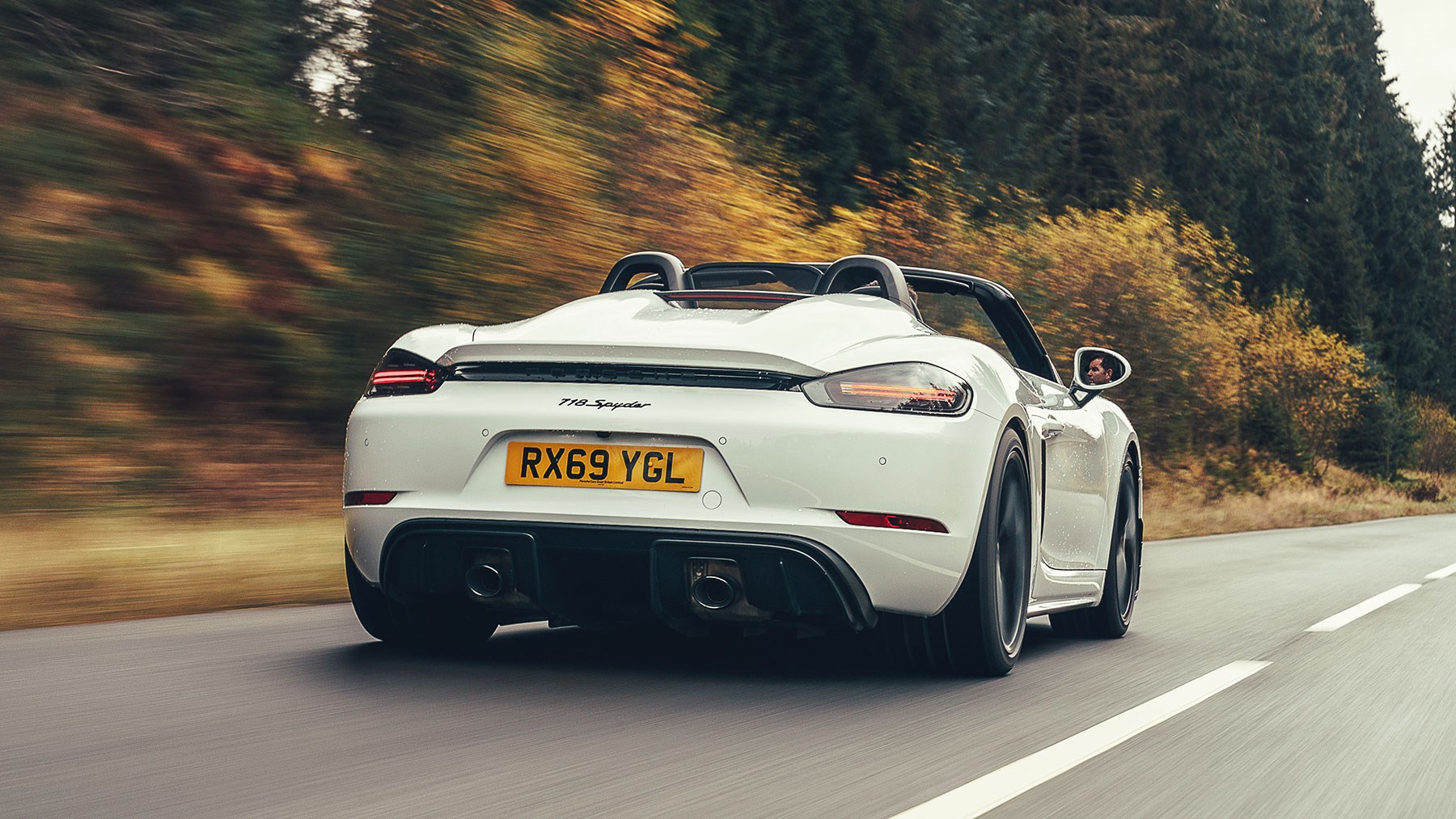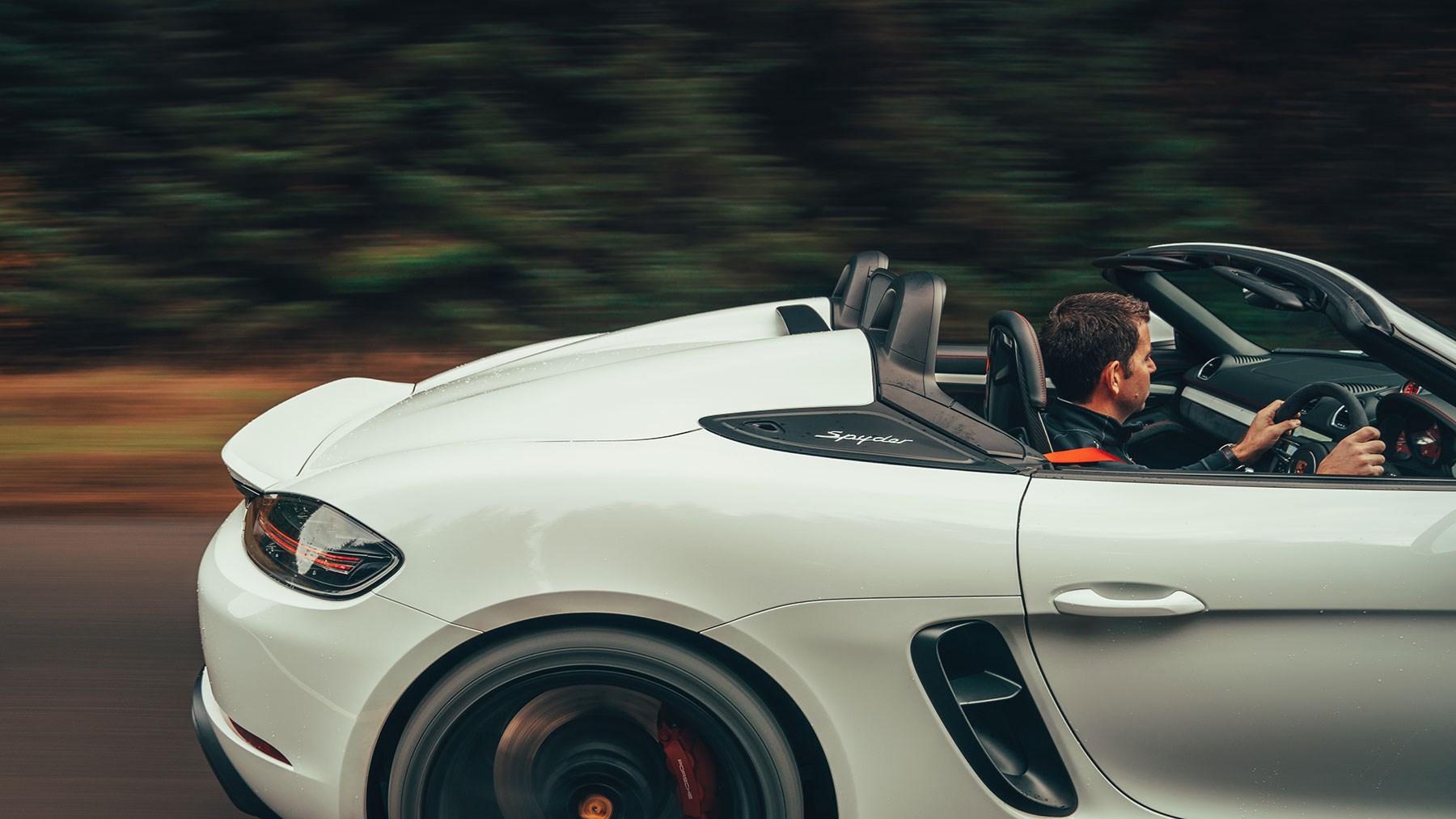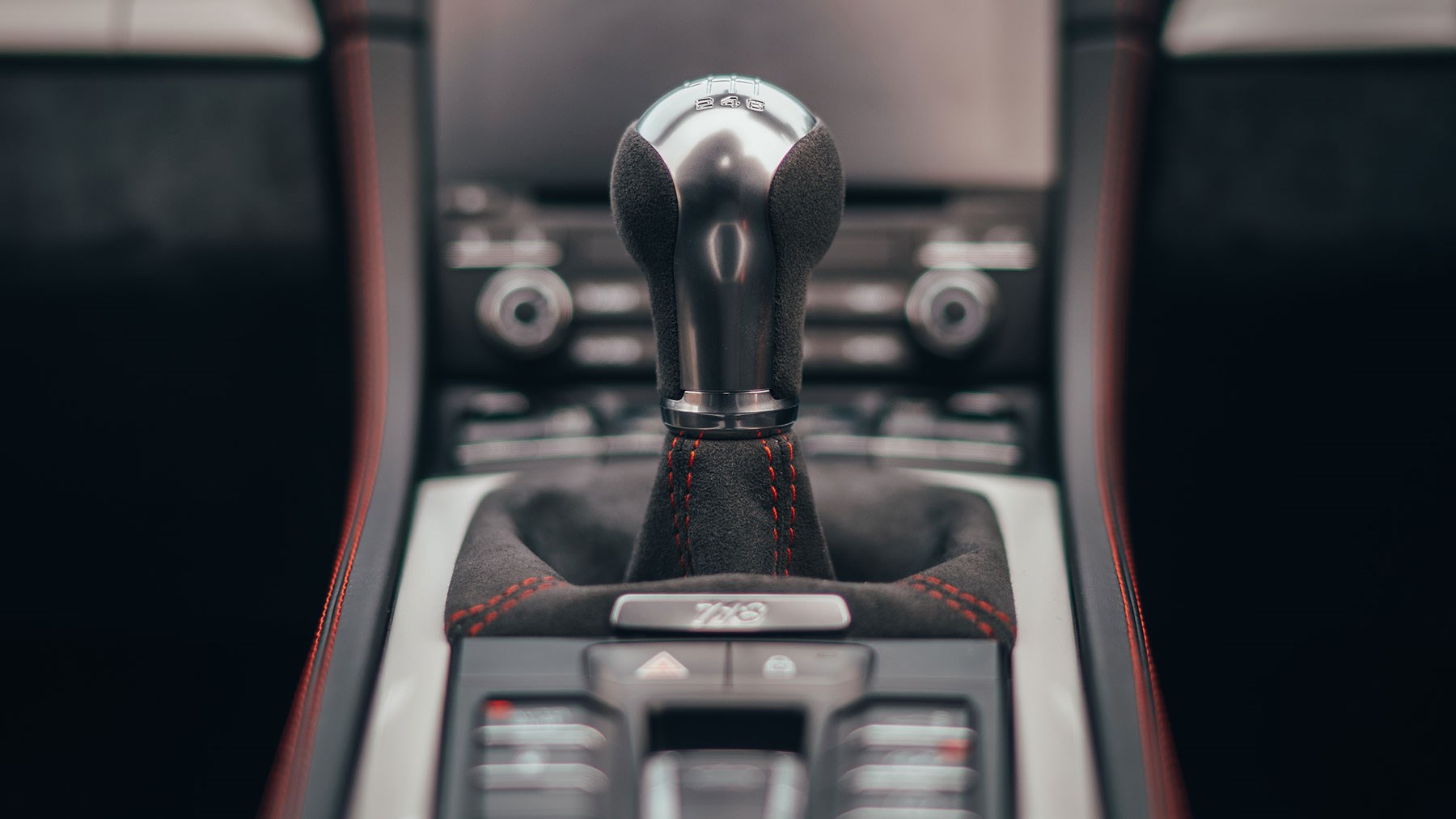► We drive Porsche’s latest 718 Spyder
► Nat-asp 6cyl from Cayman GT4
► Sublime with roof up, better with it down
We’re big fans of the Porsche 718 family, be they drop-top Boxster or coupe Cayman, but even three years on we haven’t quite got over the replacement of the previous-generation’s gorgeous flat-six for a downsized, four-cylinder turbo powerplant.
The natural remedy to this is, of course, the recently-reviewed Cayman GT4, which swaps back to a six-pot with stunning effect. But, to put it simply, who wants a roof when you can go topless? That’s where the 718 Spyder comes in.
So, is this just a six-cylinder Boxster?
Think of it more as a Cayman GT4 without a roof. Obviously it’s strongly related to the Boxster, but like the GT4 it sits lower. The two cars weigh the same and have the same 911 GT3-inspired double-wishbone suspension and 20-inch wheels.
You’ll also find a rear limited-slip differential and the same six-speed manual gearbox as the GT4. An auto is on its way. Body and underbody alterations keep it slippery but on aesthetic grounds you won’t find the Cayman’s huge rear wing, so there’s no downforce generated.

And it’s on aesthetic grounds where this car starts to win us over because, quite simply, it’s gorgeous. The elongated rear deck features speedster-style double-bubbles behind driver and front passenger, and even though the roof is a mostly-manual affair as opposed to its siblings fully electric unit, it doesn’t feel like a temporary measure as some Spyders of old have.
Go on then. What about that engine?
Having 50% more cylinders and 100% more capacity than the Boxster on which it’s based is an excellent place to start, but the 9A2 Evo engine is more than just a big lump in a small car. It spins to 8000rpm, and it doesn’t do so reluctantly – peak power arrives at 7600rpm, so it really does respond to being properly strung out.
With 414bhp it’s obviously impressively rapid: 0-62mph takes just 4.4 seconds and the top speed of 187mph can be achieved with or without the roof. We haven’t tested v-max yet…
Despite the addition of petrol particulate filters to the exhaust – necessary, of course, to meet emissions regulations – it still sounds the absolute business, too. As you run up through the rev range there’s a VTEC-style howl from behind you that even the most seasoned professional will struggle to suppress a grin at. You can turn the sports exhaust to a slightly less lairy setting if you want. We didn’t want to, especially when we had the roof down.
Like the Cayman GT4, the Spyder’s launched exclusively with a six-speed manual ‘box, though a PDK automatic is on the way. Honestly, we can’t see why you’d bother, as the manual’s both rewarding to use while gunning it but light and easy to make city schleps a pleasure. There’s an auto-blip function for downshifts, too – useful if you’re like this clumsily-hoofed tester.
Does it handle as well as it goes?
This combination of chassis and engine works astoundingly well. It’s hard to think of another car under £100,000 that delivers this level of simultaneous involvement and civility.

The steering is perfectly-weighted and the front end instantly responsive – there’s bags of feel through both the wheel and the seat, and even on roads damp enough to light the tyres in third gear there was never any worry about how much grip the car had – or didn’t have. Body control’s exceptional with the PASM adaptive dampers in Normal mode; in Sport, it’s even better.
Beefy six-piston front and four-piston rear brakes felt more than up to the job. So good in fact that we wouldn’t bother with the optional (and seriously pricey) carbon-ceramic setup unless you’re planning on taking the car to regular track days. And how many owners really do that?
How is the 2019 Porsche 718 Boxster Spyder at being civilised?
Not as good as the standard Boxster. Still more than adequate though… Drive carefully and you’ll see 25mpg, thanks to stop-start and cylinder deactivation tech, while CO2 emissions are 249g/km.
The PASM adaptive dampers come standard for the Spyder, so you can switch out of Sport and into Normal. It’s still firm but not so much that you’ll be swerving around speed cushions. The delicate steering and gearshift, meanwhile, feel at home round town as they do on the open road.
Of course, the roof needs a mention, because unlike the regular Boxster it’s manual. Raising and lowering it is more involved than, say, a Mazda MX-5, but it’s far from tricky. To lower it, you pop open the rear deck and unlock the front edge electrically. From there, it’s a case of unclipping and stowing away the trailing fins before folding the main roof section into its storage compartment. Flip down two plastic flaps, lock the rear deck, and you’re down.

Raising it is the reverse of this, and we reckon once you’ve got the rhythm going it’s a 30-second job – albeit with the inconvenience of having to pull over first.
With the roof up, the Spyder isn’t as refined as the Boxster or Cayman, but it’s not so noisy as to irritate on a long journey. And as for the interior, it’s as well-built and easy to operate as any Boxster. Even the full bucket seats on our tester weren’t so huggy as to make you feel hemmed-in.
Verdict
This is a remarkable car that, with a starting price of less than £75,000 is also impressive value. The engine, gearbox and chassis combine in spectacular fashion to create a car we’d be equally happy to take on track or on a long motorway slog. But it’s at its best driving at a fair clip along challenging, twisting roads, where you can let the engine sing and make the most of that sublime steering.
A Cayman GT4, with real downforce courtesy of that rear wing, will be a better bet for track driving – and its fixed roof gives it a little more practicality at the expense of drama. Our money, though, would go straight on the Spyder, for its greater connection to the aural drama and, of course, for the wind-in-the-hair thrills you get from any drop-top.
More Porsche reviews by CAR magazine